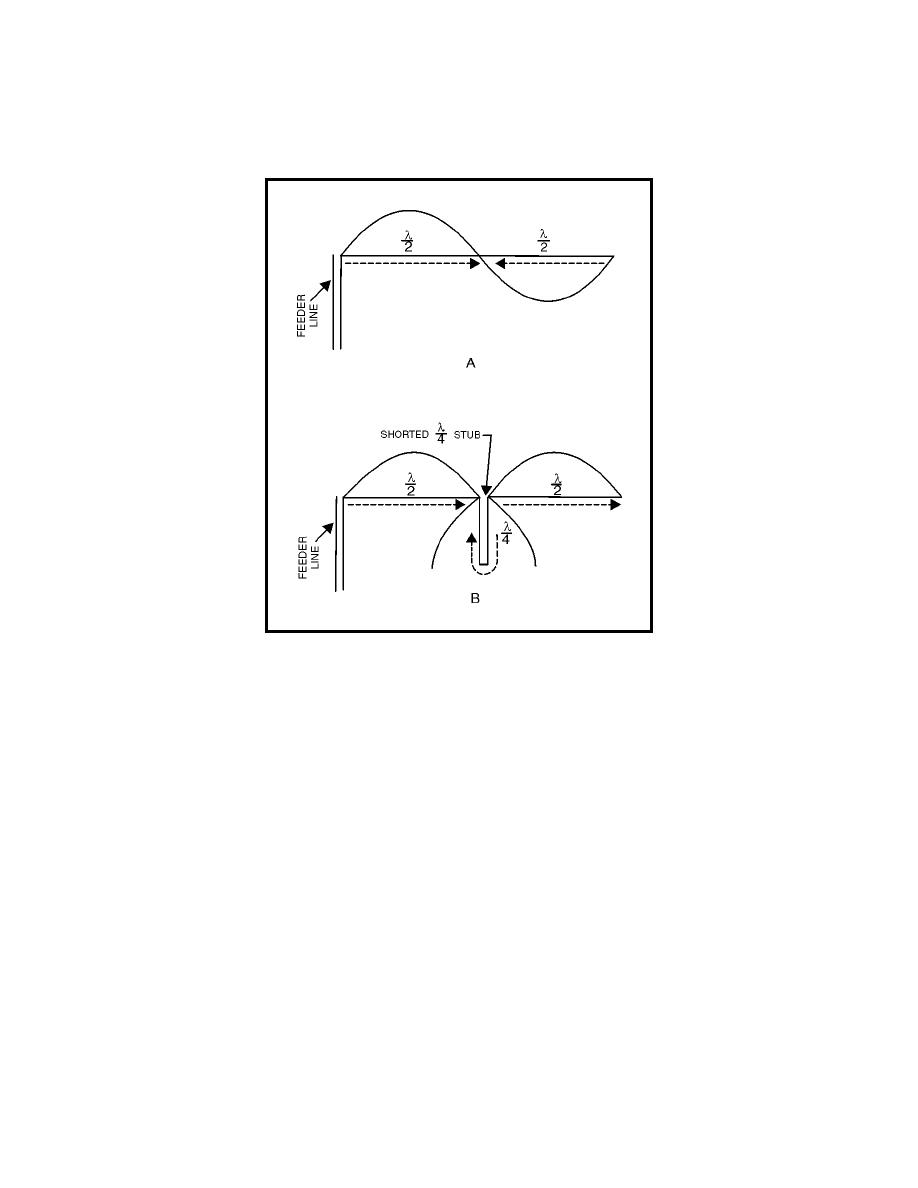
TC 9-64 _________________________________________________________________________
antenna. (Using arrows is a convenient means of determining the phase on
more complicated arrays.)
Figure 4-23. Phasing of Connected Elements
4-110. When the two elements are connected by a shorted one-quarter-
wavelength stub, as shown in figure 4-23, view B, current travels down one
side of the stub and up the other. It travels a distance of one-half wavelength
in the stub itself. As a result, the current moves through one-half cycle of
change. When the current reaches the second element, it is in the desired
phase. Because the current on one side of the stub is equal and opposite to
the current on the other side, the fields produced here cancel and no radiation
is transmitted from the stub itself.
DIRECTIVITY
4-111. The directivity of an antenna or an array can be determined by
looking at its radiation pattern. In an array propagating a given amount of
energy, more radiation takes place in certain directions than in others. The
elements in the array can be altered in such a way that they change the
pattern and distribute it more uniformly in all directions. The elements can
be considered as a group of antennas fed from a common source and facing
different directions. On the other hand, the elements could be arranged so
that the radiation would be focused in a single direction. With no increase in
power from the transmitter, the amount of radiation in a given direction
would be greater. Because the input power has no increase, this increased
directivity is achieved at the expense of gain in other directions.
4-32


 Previous Page
Previous Page
